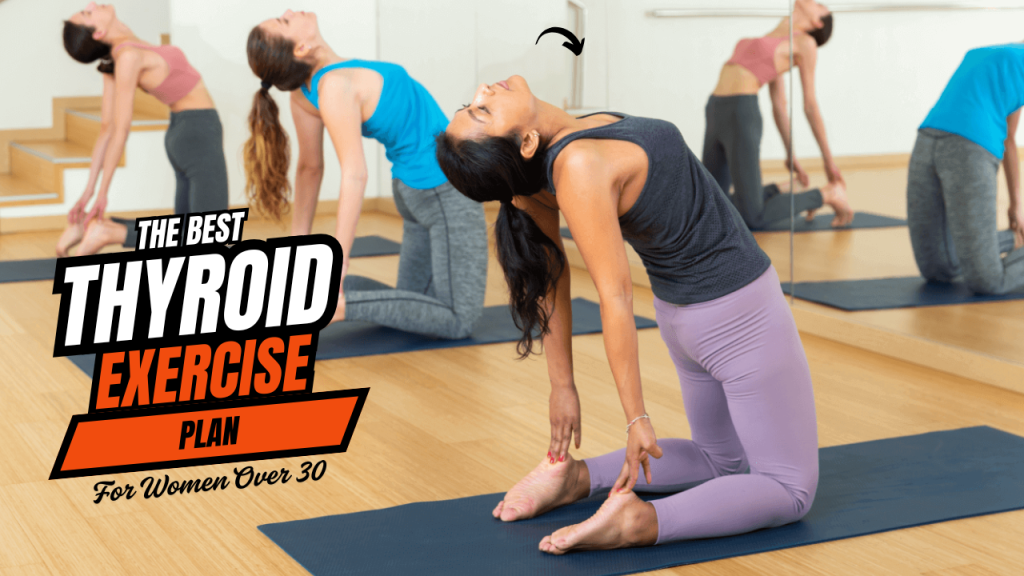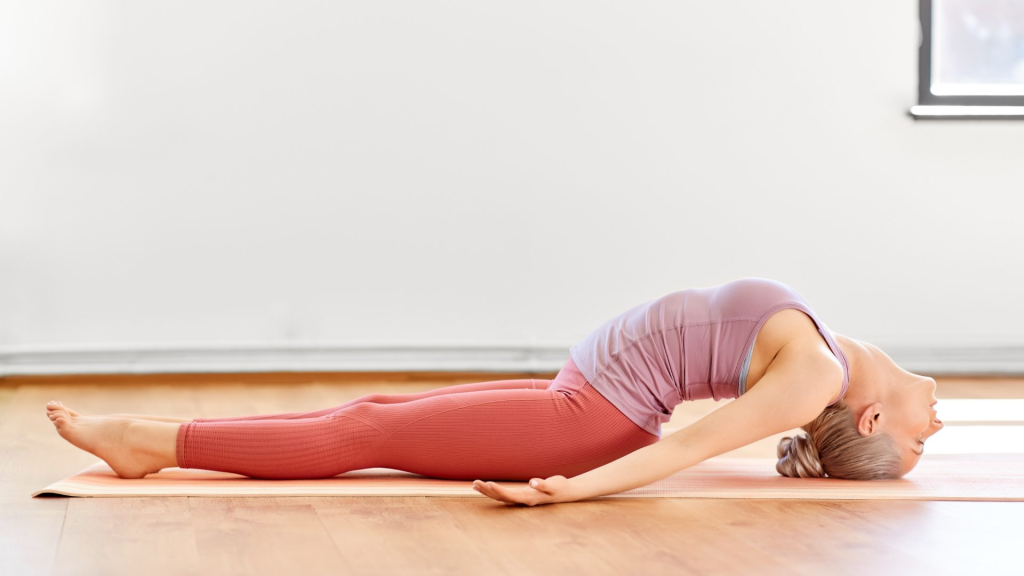Do you know that nearly 1 in 8 women will develop a thyroid disorder during their lifetime? For women over 30, fluctuating hormones, stress, and lifestyle changes can trigger thyroid imbalances—most commonly hypothyroidism. But here’s the encouraging part: a targeted exercise routine can reboot your metabolism, restore energy, and uplift your mood like nothing else.
Welcome to the ultimate thyroid-friendly fitness plan, crafted especially for women navigating the changes of their 30s and beyond. This isn’t just about burning calories—it’s about feeling alive again.

What You Can Expect After 30 Days
| Area of Health | Positive Changes After 30 Days |
|---|---|
| Energy Levels | Noticeable increase in daily energy, reduced morning fatigue |
| Mood & Mental Clarity | Improved focus, reduced brain fog, and better emotional balance |
| Metabolism | Slight boost in metabolism, easier digestion, and fewer sugar cravings |
| Weight & Body Composition | Modest weight loss (1–3 kg average), increased muscle tone |
| Sleep Quality | Deeper, more restful sleep and easier time falling asleep |
| Joint & Muscle Health | Less stiffness, improved flexibility, and stronger muscle support |
| Stress Reduction | Lower perceived stress and better ability to cope with daily challenges |
| Hormonal Balance | More stable mood swings, reduced PMS symptoms in some women |
| Thyroid Support | Enhanced circulation of thyroid hormones, more stable TSH levels (if monitored) |
| Consistency & Motivation | Greater workout adherence and confidence in maintaining a routine |
Why Exercise Matters for Thyroid Health
Your thyroid is a small, butterfly-shaped gland in your neck—but its impact is massive. It regulates:
- Metabolism
- Heart rate
- Temperature
- Mood
- Energy levels
When your thyroid isn’t functioning properly, especially in hypothyroidism, it can lead to weight gain, fatigue, depression, joint pain, and brain fog.
The right exercise plan doesn’t just help with weight—it can stimulate thyroid hormone production, improve circulation, balance mood-regulating chemicals, and reduce inflammation.
Myth Buster: Exercise Doesn’t Burn You Out with Hypothyroidism
MYTH: Women with thyroid issues should avoid workouts because it drains energy.
FACT: While intense overtraining can worsen fatigue, gentle, consistent, and thyroid-conscious exercise routines actually combat tiredness and stimulate the body to work better.
The Best Thyroid Exercise Plan for Women Over 30
This plan focuses on metabolic activation, adrenal support, joint protection, and hormonal balance—everything your thyroid needs.
1. Low-Impact Cardio – 3 to 4 times per week (20–30 minutes)

Think:
- Brisk walking
- Swimming
- Elliptical
- Cycling
Why? Cardio boosts blood flow, which helps transport thyroid hormones throughout the body. Plus, it supports cardiovascular health—a common concern in thyroid patients.
Tip: Walk outdoors in the morning for a natural dose of vitamin D, essential for thyroid function.
2. Strength Training – 2 to 3 times per week (30 minutes)

Use light to moderate weights or resistance bands. Focus on full-body workouts like:
- Squats
- Lunges
- Push-ups (modified if needed)
- Resistance band rows
Why it works: Muscle mass burns more calories—even at rest. Strength training counters the muscle loss that often comes with hypothyroidism and slows down metabolism.
Did you know? Just 1 pound of muscle burns 3x more calories than a pound of fat.
3. Yoga for Thyroid – Daily or 3–5x a week (15–20 minutes)

Certain poses are known to stimulate the thyroid gland:
- Shoulder Stand (Sarvangasana)
- Fish Pose (Matsyasana)
- Cobra Pose (Bhujangasana)
- Cat-Cow Stretch
Yoga also reduces stress, one of the biggest thyroid disruptors.
Interesting Fact: High cortisol levels from stress can suppress thyroid hormone production. Yoga helps regulate cortisol naturally.
4. Gentle HIIT – Once a week (Optional for advanced users)

If you’re ready and your doctor approves, try 10–15 minutes of low-impact HIIT (e.g., fast-paced walking or cycling intervals). Keep intensity manageable.
- 30 seconds brisk pace
- 90 seconds slower recovery
- Repeat for 10–15 minutes
This revs metabolism without overtaxing adrenals, unlike traditional HIIT.
5. Stretching & Mobility – Daily (5–10 minutes)

Support joint health and prevent stiffness by gently stretching:
- Neck rolls
- Shoulder openers
- Hamstring stretches
- Spine twists
Women with thyroid conditions often experience joint pain or muscle tightness. Daily flexibility work maintains the range of motion and reduces pain.
Weekly Sample Thyroid Exercise Schedule
| Day | Activity |
|---|---|
| Monday | 30 min walk + 15 min yoga |
| Tuesday | Strength training (full body) |
| Wednesday | Rest or light stretching |
| Thursday | Walk or cycle + yoga |
| Friday | Strength training (lower body focus) |
| Saturday | Optional low-impact HIIT + stretching |
| Sunday | Rest or 15 min gentle yoga |
Supportive Tips to Maximize Results
- Stay hydrated: Thyroid imbalances affect fluid balance.
- Eat post-workout protein: Supports muscle repair and hormone production.
- Don’t skip rest days: Overtraining can worsen thyroid symptoms.
- Get blood levels checked: Especially TSH, T3, T4, and Vitamin D.
- Listen to your body: Rest if you’re feeling unusually fatigued.
Conclusion: Feel the Difference
Thyroid disorders can feel overwhelming, especially as your body changes after 30. But the right exercise plan doesn’t just help manage symptoms—it can transform how you feel every day.
Incorporate this plan slowly, adjust based on your energy levels, and watch your strength, clarity, and mood improve. It’s not about pushing harder—it’s about working smarter with your body, not against it.
Remember: Your thyroid isn’t broken—it’s just asking for the right kind of attention. Start today, and feel the difference.
Frequently Asked Questions (FAQs)
Can I exercise if I have hypothyroidism?
Yes, you can—and should. Regular, gentle exercise helps boost metabolism, reduce fatigue, support mood, and improve circulation, all of which are beneficial for thyroid health. Just be sure to listen to your body and avoid overexertion.
What type of exercise is best for thyroid problems?
Low-impact cardio, strength training, and yoga are ideal. These forms of exercise improve metabolism, muscle tone, hormone balance, and stress management without overwhelming the body.
How often should I work out if I have thyroid issues?
Aim for 3 to 5 days a week, depending on your energy levels. Include a mix of walking, strength training, yoga, and stretching. Always take rest days as needed.
Can too much exercise worsen thyroid symptoms?
Yes, excessive or high-intensity training without proper rest can increase cortisol, stress your adrenals, and worsen fatigue or thyroid imbalance. It’s essential to balance movement with recovery.
Will exercising help me lose weight with hypothyroidism?
Exercise supports weight loss, especially when paired with a thyroid-friendly diet and proper medication. While results may be slower, building muscle and improving metabolism will lead to sustainable fat loss over time.
Is yoga really effective for thyroid health?
Yes. Certain yoga poses gently stimulate the thyroid gland and help regulate stress hormones. Yoga also improves flexibility, mood, and sleep—all critical for women with thyroid disorders.
I feel tired all the time—should I still work out?
If you’re extremely fatigued, start small—like a 10-minute walk or gentle yoga. Movement can gradually increase energy rather than drain it. But always consult your doctor if your fatigue is severe or worsening.
Are there any exercises to avoid with thyroid problems?
Avoid high-impact, overly intense workouts (like intense CrossFit or long-distance running) unless you’re fully stable and under medical supervision. These may stress the body and slow recovery.
How long until I feel results from this exercise plan?
Many women report better energy and mood within 2–3 weeks. Visible changes in weight, strength, or endurance often show up around the 4–8 week mark, depending on consistency and thyroid levels.
Should I talk to my doctor before starting this plan?
Absolutely. Especially if you’re on thyroid medication or dealing with other health issues, get medical clearance before beginning any new fitness regimen.





